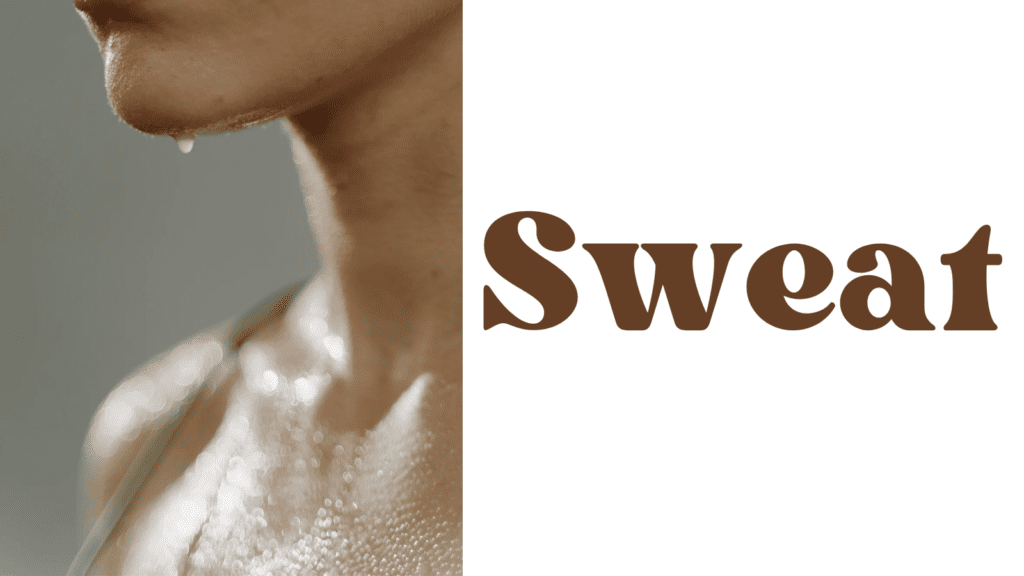Sweating Unveiled: The Science, Benefits, and Beauty of this Vital Body Mechanism

Sweat – the body’s natural cooling mechanism, often misunderstood and underappreciated. We’ve all experienced it, whether during a strenuous workout, a nerve-wracking presentation, or a scorching summer day. In this blog post, we’ll delve into the science behind sweating, its benefits, and why we should embrace the beauty of this essential bodily function.
The Science of Sweat
Sweating is a remarkable physiological process that plays a crucial role in maintaining the body’s internal balance and preventing overheating. This intricate system involves the collaboration of the nervous system, sweat glands, and circulatory system. In this exploration of the science of sweat, we’ll unravel the mechanisms behind this essential bodily function.
The Sweat Glands: The Architects of Cooling
- Eccrine vs. Apocrine Glands: The human body boasts two main types of sweat glands: eccrine and apocrine. Eccrine glands are distributed across the skin, with the highest concentration on the palms, soles, and forehead. These glands are responsible for regulating body temperature through the secretion of a watery, electrolyte-rich fluid. On the other hand, apocrine glands, found in areas with dense hair follicles like the armpits and groin, produce a thicker substance that, when broken down by bacteria, can result in body odor.
- Nervous System Control: Sweating is a dynamic response orchestrated by the autonomic nervous system, specifically the sympathetic branch. When the body senses an increase in temperature, whether due to physical exertion or environmental factors, the nervous system signals the eccrine glands to release sweat. This process, known as thermoregulation, is vital for preventing heat-related illnesses and maintaining a stable internal environment.
The Composition of Sweat: Beyond Water
- Water: Sweat is predominantly composed of water, serving as a carrier for other essential components. As sweat reaches the skin’s surface, it evaporates, drawing heat away from the body and providing a cooling effect.
- Electrolytes: Crucial electrolytes, such as sodium, potassium, and chloride, are also present in sweat. These minerals aid in maintaining the body’s fluid balance and are essential for muscle and nerve function. The loss of electrolytes through sweat emphasizes the importance of hydration during physical activity.
- Waste Removal: Sweating contributes to the elimination of waste products from the body, including urea and small amounts of toxins. This detoxification process is an additional benefit of the body’s sweat mechanism.
The Cooling Effect: Evaporation in Action
- Evaporative Cooling: The magic of sweating lies in the process of evaporation. As sweat reaches the skin’s surface, it absorbs heat from the body and transforms from a liquid to a vapor. This phase change requires energy, effectively lowering the skin’s temperature and providing a cooling sensation.
- Efficiency in Heat Dissipation: Sweating is an incredibly efficient means of heat dissipation. The body can release a substantial amount of heat through the evaporation of sweat, allowing individuals to engage in prolonged physical activities without succumbing to overheating.
Benefits of Sweating
Sweating is often viewed as a natural response to physical exertion or exposure to heat, but beyond its role in cooling the body, sweating offers a range of health benefits. Here’s a closer look at some of the advantages of breaking a sweat:
1. Temperature Regulation:
- Preventing Overheating: The primary function of sweating is to regulate body temperature. As sweat evaporates from the skin, it dissipates heat, preventing the body from overheating during physical activity or exposure to high temperatures.
2. Detoxification:
- Elimination of Toxins: Sweat is a vehicle for eliminating certain toxins from the body. Heavy metals, urea, and other waste products are expelled through sweat, contributing to the detoxification process.
3. Skin Health:
- Cleansing Pores: Sweating opens up pores, helping to flush out impurities and dead skin cells. This natural cleansing process can contribute to healthier, clearer skin.
4. Improved Circulation:
- Enhanced Blood Flow: Sweating engages the cardiovascular system, promoting better circulation. This increased blood flow delivers oxygen and nutrients to cells more efficiently, supporting overall cardiovascular health.
5. Weight Management:
- Calorie Expenditure: Physical activity that induces sweating often involves calorie expenditure. Regular exercise, accompanied by sweating, can contribute to weight management and the reduction of body fat.
6. Stress Reduction:
- Endorphin Release: Exercise-induced sweating triggers the release of endorphins, the body’s natural mood elevators. This can help reduce stress, anxiety, and improve overall mental well-being.
7. Immune System Support:
- Antimicrobial Properties: Sweat contains antimicrobial peptides that can help protect the skin from infections. This, in turn, may contribute to overall immune system support.
8. Joint and Muscle Health:
- Toxin Release: Sweating during exercise can aid in the removal of lactic acid and other metabolites from muscles, potentially reducing muscle soreness and supporting joint health.
9. Improved Sleep Quality:
- Body Temperature Regulation: Engaging in physical activity that induces sweating can help regulate body temperature, promoting better sleep. The post-exercise cooling effect can contribute to a more relaxed state conducive to restful sleep.
10. Social and Cultural Benefits:
- Community Bonding: Engaging in group physical activities, such as sports or fitness classes, often involves sweating. This can foster a sense of community and social connection, contributing to overall well-being.
Embracing the Beauty of Sweat
1. A Symphony of Effort:
- Physical Endeavors: The sheen of sweat on your skin after a challenging workout is more than just a sign of exertion. It’s a testament to your commitment to physical health, showcasing the effort you invest in nurturing your body.
2. The Elixir of Detoxification:
- Cleansing from Within: Every drop of sweat carries with it more than just water. It’s a vehicle for expelling toxins, a natural detoxification process that leaves you feeling refreshed and revitalized.
3. An Ode to Adaptability:
- Thermoregulation Mastery: Sweating is your body’s way of adapting to changing environments. Whether you’re basking in the summer sun or pushing your limits in a heated yoga session, your body orchestrates a symphony of cooling mechanisms to maintain equilibrium.
4. The Artistry of Skin Health:
- Pore Purification: Sweat cleanses your skin from the inside out. As pores open up, impurities are expelled, leaving your skin with a natural glow. It’s a beauty regimen designed by nature.
5. Mind-Body Connection:
- Physical Expression of Emotion: Sweat isn’t confined to the realm of physical activity. It’s a companion in moments of stress, excitement, and even joy. The glisten on your skin tells a story of the emotional journey your body undertakes.
6. Strength in Vulnerability:
- Breaking Barriers: Embracing sweat is an acknowledgment of vulnerability. It’s a sign that you’re willing to step out of your comfort zone, break through barriers, and push yourself to new limits, both physically and mentally.
7. The Social Glue:
- Shared Experiences: Sweating together fosters a unique bond. Whether it’s a group fitness class, a team sport, or an outdoor adventure, the shared experience of sweating creates connections and a sense of camaraderie.
8. Endorphins Unleashed:
- The Happiness Hormone: Sweating triggers the release of endorphins, the body’s natural mood enhancers. It’s a euphoric experience, an internal celebration that leaves you feeling not just physically invigorated but emotionally uplifted.
9. A Lesson in Persistence:
- Perseverance in Action: The persistence required to continue sweating, be it through a challenging workout routine or a tough day’s work, speaks volumes about your dedication to your goals and aspirations.
10. Respecting the Body’s Wisdom:
- Listening Within: Embracing sweat is an act of listening to your body. It’s a dialogue where your body communicates its needs, and by acknowledging and respecting this communication, you nurture a harmonious relationship with yourself.
Conclusion
The beauty of sweat extends far beyond its physical manifestation. It embodies the resilience of the human body, telling a story of effort, adaptability, and emotional expression. Embracing sweat is not just about staying cool; it’s about recognizing the intricate mechanisms that keep us balanced and healthy. So, the next time you feel the droplets forming on your skin, revel in the elegance of your body’s natural processes – a symphony of health, vitality, and the unmistakable beauty of embracing the sweat.
Disclaimer
The information provided in this blog post is for informational purposes only and is not intended as medical advice. It is essential to consult with a healthcare professional before making any significant changes to your exercise routine, diet, or lifestyle, especially if you have underlying health conditions. The author and publisher of this blog post are not responsible for any consequences that may arise from the use of the information presented.
Stay updated—subscribe now for informed empowerment!

